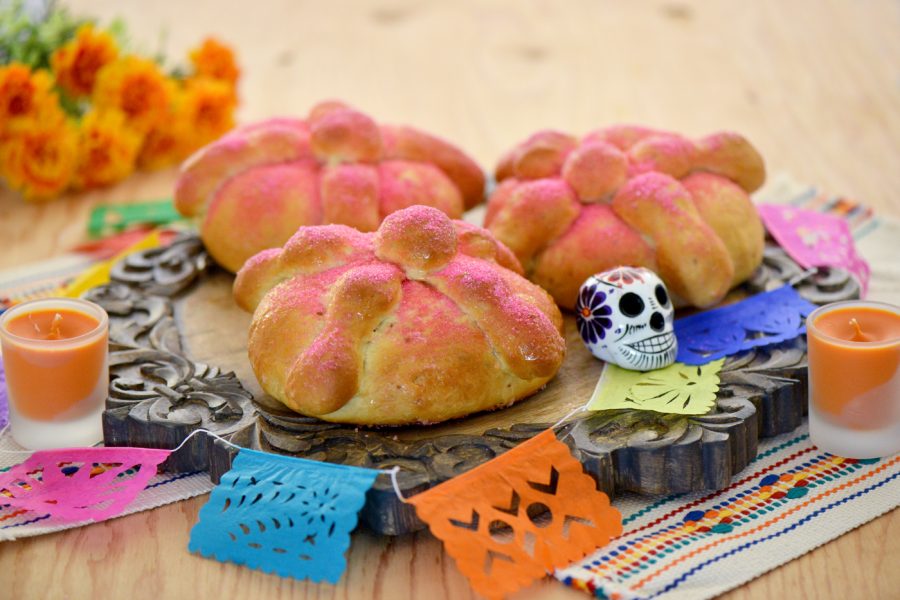Bones, Bodies, and Bread?
November 29, 2022
October has passed; the spooks and giggles are over, or are they?
For us in America, the days of ghosts and supernatural beings stop after October 31, but for those in Mexico, the days for spirits have just begun. Known for their holiday, “Día de Los Muertos” which takes place from November 1 to November 2 (some even celebrate it through November 6), these days are meant for family members and friends to pay their respects to the dead.
On November 1, the gates of heaven are opened to allow for spirits of the dead to visit their families in the land of the living. On this day, offerings are made at altars known as “ofrendas” and decorations sporting skulls, flowers, and bright, vivid colors are put on display to remember those who have been lost.
But this isn’t the only way that Día de Los Muertos is celebrated, many famous dishes are traditionally cooked and served to the spirits of the dead. Of these dishes, one of the most well known is “Pan de Muerto” or “Bread of the Dead”. This dish is meant to honor, remember, and feed the dead spirits as they spend their day in the land of the living.
The bread itself is a simple yeast loaf meant to be sweet and sugary in flavor, but the overall look is not what one would expect. A loaf of bread is round and circular to represent the circle of life and death, while the small circle on top is meant to signify the skull, a popular symbol seen throughout Día de Los Muertos. There are several ways to interpret the bone-like structures on the sides of the bread. Some describe it exactly as that, bones meant to represent the human body, but others see these pieces of bread as being: the “tears” that loved ones have shed over the dead, the four cardinal directions, and even signifying four pre-Hispanic gods that may have been significant in native tribe cultures of the Mexican area.
Nevertheless, no matter what the bread may signify, I wanted to try and make this bread myself. I followed a recipe by Michelle Chavez and it was fairly simple, the only downside was the over six hour wait that coupled with the creation of this bread due to the proofing time needed. When my loaves were done, I found that they looked a little misshapen and needed some refinement, but they had a sweet taste that wasn’t too strong and balanced nicely with the amount of salt added. The texture was a little more biscuit than bread, and this may have been due to adding too much flour or over-kneading the dough.
Baking is a science, but it is also a process. During this process, I learned the history behind the simple, sweet dough and what it signified for the people of Mexico. Although my bread may not have turned out perfectly, it was an experience of trial and error that resulted in a better understanding of those who do this every year for their loved ones who have passed.
If you would like to try this recipe for yourself, here is the link: https://thesweetmolcajete.com/la-mejor-receta-de-pan-de-muerto/.





